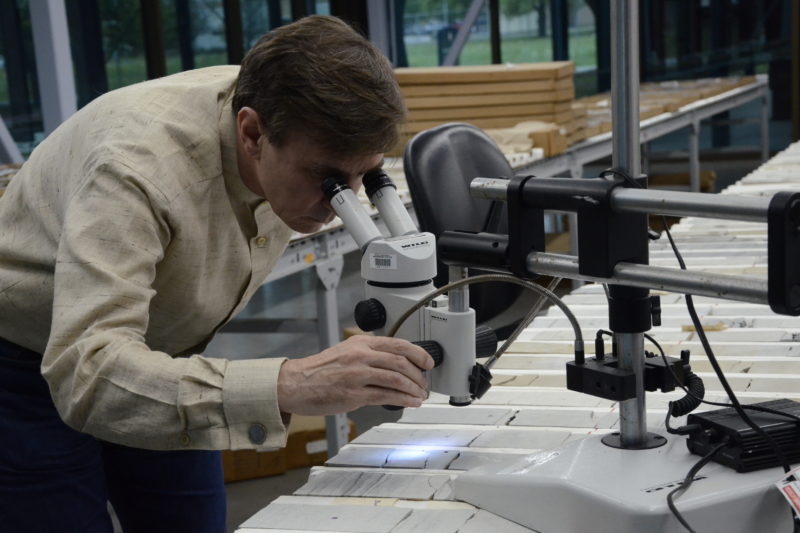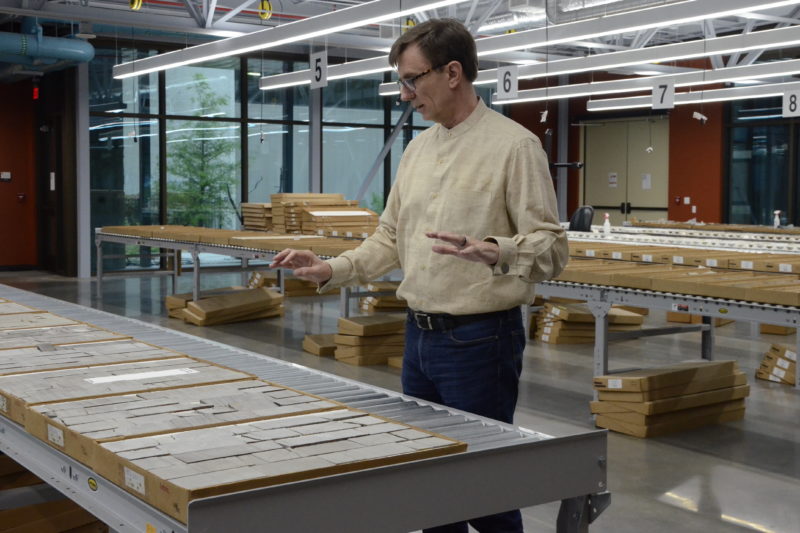South Texas Geothermal Energy Project Ready to Provide Power That Never Stops
By Sumaiya Malik
Reporting Texas
A geothermal test project that could set the stage for “always on” green energy is set to take root in South Texas with a goal of competing with wind and solar energy production.
The project is a joint venture between Sage Geosystems, a private green energy company, and the Bureau of Economic Geology at the Jackson School of Geosciences at the University of Texas at Austin, based on a U.S. Air Force-funded initial feasibility study. As a first step, Sage will test the new technology in an existing oil well on a ranch south of San Isidro in Starr County, near the Texas-Mexico border.
If that is a success, Sage is expected to build the first prototype geothermal project at the Ellington Field Joint Reserve Base on the south side of Houston.
“We identified a well in South Texas that was previously drilled by Shell for oil and gas 50 years ago,” Lev Ring said. He has a doctorate in aerospace engineering, worked in the oil and gas industry and is now CEO of Sage Geosystems, which expects to spend several million dollars for the initial field testing.
“To check for success [in testing], we will be measuring temperature, pressure and flow rate of fluid in the well,” Ring said. “The moment we get the data, we will be able to simulate how much energy or electricity we will be able to generate.”
Sage plans to use the results of this test to build the first prototype project, Ring said.
The prototype will combine advances made in the oil and gas industry to drill a single, narrow well 3 or 4 miles into the earth to touch the heat of the magma, or molten rock, beneath the earth’s crust. Using that heat source, the project aims to create a closed-loop system to produce energy without any carbon emissions.
It will generate power by circulating a fluid deep in the earth, where it absorbs heat from the magma before returning to the surface. From that point, the power generation is essentially the same as in any other power plant: the heat is used to drive a turbine to generate electricity, said Kenneth Wisian, a retired Air Force major general and associate director of the UT-Austin School of Economic Geology. Wisian is a research scientist in geothermal energy.

Retired Air Force Gen. Kenneth Wisian studies a rock sample through a microscope in the Bureau of Economic Geology Mineral Studies Lab on April 15, 2021. Nuzha Zuberi/Reporting Texas
“Conventional geothermal energy production has been increasing slowly, but that is about to change in a big way,” Wisian said.
The project includes a surface generator which will sit almost directly on top of the well. The power produced will feed into a microgrid for efficiency, and that in turn will connect to systems that need power at all times, such as military bases and hospitals. Separately, it will connect to a commercial power grid off base.
A microgrid is a small, self-sufficient energy system that serves a specific location that needs constant energy, in this case Ellington Field. The base stands at the edge of a geopressure zone, an area abundant in underground heat, water and permeability, key ingredients of geothermal, according to the U.S. Department of Energy.
“The goal of Sage as well as many geo-startups is to drill cheaply and effectively for geothermal energy to compete with wind and solar,” said Jamie Beard, the executive director of GEO, a Department of Energy-funded geothermal entrepreneurship organization at the UT-Austin.
Wind and solar are intermittent energy sources that generate power only when there’s wind and sunlight, and the electricity they generate must be stored. Because geothermal energy is always on, Beard said, it doesn’t require storage.
“By the time [Sage’s] production scales, they will be producing electricity competitive with solar and wind without the cost of energy storage,” Beard said.
According to the U.S. Environmental Protection Agency, in 2016, the 64 existing geothermal power plants in the U.S. provided 0.4% of power in the energy sector. But those plants, which each rely on two wells, are expensive and not cost effective, Ring said.
While conventional geothermal plants use the water or steam that is already in the pores and fractures of the rock, the test project will use an outside fluid such as water or carbon dioxide to harvest the heat, Wisian said.
Advances in oil and gas industry drilling technology have opened the door to generating economically viable geothermal power almost anywhere, not just in the western United States where there are volcanic and other geologic features that concentrate the Earth’s heat, Wisian said in testimony before the Texas House Energy Resources Committee on April 12, as an expert on geothermal energy.
Ring said fracking is a part of geothermal excavation but that in the last 15 years, the oil and gas industry has learned how to frack without causing seismic activity.

Retired Air Force Gen. Kenneth Wisian explains the importance of the geological samples in the Bureau of Economic Geology Mineral Studies Lab on April 15, 2021. He tests samples from the lab to see how they can withstand certain conditions. Nuzha Zuberi/Reporting Texas
Wisian said some of the new geothermal drilling methods will use limited fracking and a related technique known as hydroshearing. Hydroshearing is a process that slowly increases the pressure of fluid in underground rocks to aid heat extraction, while fracking uses sudden pressure to fracture the rock, according to the Canadian Geothermal Energy Association website.
“We support clean, renewable energy and are working to achieve a just transition away from dirty fossil fuel resources and infrastructure,” Shane Johnson, Lonestar Chapter Sierra Club, said in an email. A just transition moves away from the fossil fuel industry to a clean, renewable economy that works toward justice and equity, he said.
The Ellington project is expected to cost $30 million to $35 million. Ring said if the prototype works as expected, several financial institutions, including Sage’s current investors, have expressed interest in funding the first power plant. The process will take two to four years depending upon how long it takes to file for permits, Wisian said.
The military is very interested in a low-cost power source that is independent of the electrical grid and won’t fail, Ring said.
“The U.S. Air Force is interested in Net Zero Carbon,” Capt. Trevor Spiro, an innovation officer at Ellington, said. Net zero carbon is when the amount of carbon dioxide emissions released on an annual basis is zero or negative.
Currently, CenterPoint Energy is Ellington’s energy provider, and Ellington’s backup sources are traditional fuel generators, he said.
Rep. R.D. “Bobby” Guerra, a Democrat from McAllen, represents District 41, where the test project is scheduled to start this summer. Guerra filed House Bill 3576, which would allow the Texas Railroad Commission to invest state money in a for-profit company that has invested at least $10 million in this venture.
“Texas already has the human capital and technology, so it is not difficult to diversify the energy portfolio,” said Leo Garcia, Guerra’s legislative assistant.
“The expectation is that the state would get money back with profit,” said Beard, the GEO executive director.
Even though the subsidies would be helpful, Ring said their work will continue even if the bill isn’t approved by lawmakers and the governor. “We need to be commercial and profitable without any subsidies,” he said.
Down the road, Ring and Wisian both say more geothermal power plants could be built across the state if their project is successful and having power sources that rely on the earth’s natural heat could help Texans avoid some of the suffering they experienced in the February winter storm.
“If this works, we are off to the races,” Wisian said.